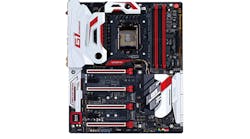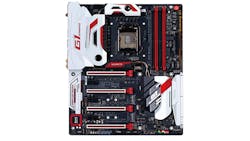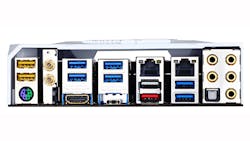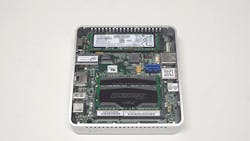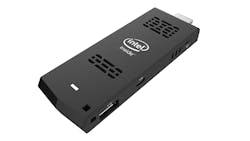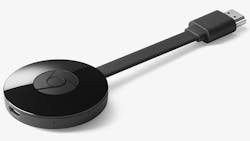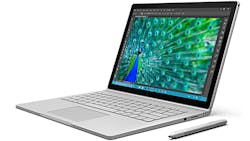Smartphones and tablets have replaced PCs and laptops for many users, but these platforms are more functional and powerful than ever. They are also sporting the latest technologies like PCI Express Gen 3, USB 3.1 with the new Type C connector (see “What’s Up with USB 3.1 Type-C?” on Electronic Design) and M.2 connectors for motherboard-based flash storage (see “For Designers, A New Selection of Storage Choices” on Electronic Design).
Building a Mean Machine
Building a PC from scratch used to be common, but now it is more common for those looking for high-performance platforms like gamers. Leading the charge is Gigabyte’s Z170X-Gaming-G1 motherboard for Intel’s 6th-generation Core processors (Fig. 1). It uses Intel Z170 chipset and it will be paired with the hottest chips around, so liquid cooling might be used with the processor. Keeping the rest of the board cool can also be done using liquid cooling as the motherboard heatsinks have G1/4 thread fittings. Tubing would connect the motherboard, processor, and video card to a high-performance cooling system.
The motherboard uses dual-channel DDR4. Four sockets support up to 64 Gbytes of DRAM. The system exposes the HDMI 2.0 support available with the processor’s integrated graphics, but most gamers will populate one or all of the four PCI Express Gen 3 slots that have metal reinforcement for those large GPU cards. There are two x16 and two x8 slots plus three x1 slots. They support 2-, 3-, and 4-way AMD CrossFire/NVidia SLI technologies for multiple GPU configurations.
There are two M.2 connectors on this motherboard. They support PCI Express Gen 3 x4 interfaces with a transfer rate of 32 Gbits/s. Each connection can handle PCIe NVMe or SATA SSD. SATA interfaces for internal drives are supported as well as three SATA Express connectors with a transfer rate of 16 Gbit/s. SATA Express is another PCI Express interface. The M.2 connectors and SATA Express are becoming more common on motherboards. They utilize PCI Express interfaces to provide faster data transfer speeds (see “For Designers, A New Selection of Storage Choices” on Electronic Design). The M.2 connectors provide compact storage on the motherboard itself.
On the back panel (Fig. 2) are two Killer Gigabit Ethernet ports and Killer Wireless-AC ports. Wireless support includes 802.11 a/b/g/n/ac and Bluetooth 4.1. The 802.11ac support runs at speeds up to 867 Mbits/s. The Killer Windows drivers are capable of balancing and prioritizing traffic across multiple network interfaces.
The back panel also exposes a collection of USB ports. Some support USB 3.0 and USB 2.0. The red type-A port is USB 3.1 as is the Type-C connector. This Type-C connection handles USB 3.1 only, even though the Type-C connectors on other devices may support alternate interfaces such as DisplayPort (see “What’s Up with USB 3.1 Type-C?” on Electronic Design).
The DualBIOS is in a pair of 128 Mbit flash chips. It uses AMI’s UEFI support, which is also typical these days. UEFI supports secure boot along with many other features not found in the older BIOS support. This particular motherboard supports Q-Flash Plus that can update the motherboard DualBIOS using a USB interface without having the CPU or DRAM installed.
This full-size motherboard provides all the latest interfaces and features for gamers. Smaller motherboard standards like Mini-ITX and Micro-ATX are available with the latest interfaces, but they tend to have fewer given the more limited boards space. These smaller platforms are sometimes used with fanless CPU support,which is especially useful for embedded applications.
Shrinking the PC
Even smaller form factors are readily available these days including Intel’s Next Unit of Computing (NUC). The NUC form factor is available from a number of vendors with similar-sized options available as well. The NUC is associated with x86 platforms like Intel’s Core family. Fanless NUC versions are available, but Core i3, i5, and i7 processors typically require a fan. Other processors are available in this form factor as well. Intel’s NUC5i5RYK (Fig. 3) has a small fan inside that is quiet and runs when needed.
These systems can handle the same chores as the larger motherboards, although they tend to have limited expansion. Inside the NUC5i5RYK is an M.2 flash drive and a pair of DDR3L SIMMs (Fig. 4). Micro HDMI, Mini DisplayPort, and Gigabit Ethernet connectors expose the system interfaces along with a host of USB 3.0 sockets with fast charging support. There is even an infrared sensor on the front panel.
Wireless support includes 802.11 b/g/n/ac, Bluetooth 4.0, and Intel Wireless Display (WiDi) as well as Near Field Communication (NFC) support. The NFC support requires an optional internal adapter. The other wireless interfaces are built in, including the antenna.
Intel’s NUC has a UEFI BIOS with secure boot support. This works with operating systems like Microsoft Windows 10 and Linux.
The compact size makes it possible to mount the NUC on the back of a monitor or HDTV that has a VESA-compatible mount. The NUC5i5RYK actually comes with the VESA mount plate. This is handy for building a media center or for digital signage applications.
An even smaller form factor designed for use with HDTVs is Intel’s Compute Stick (Fig. 5). The Compute Stick has a quad-core Atom processor, 2 Gbytes of DDR3L RAM, and 32 Gbytes of flash storage and is designed to run operating systems like Microsoft Windows 10 and Ubuntu Linux. The only expandable option is the Micro SD slot.
The Compute Stick is designed to plug into an HDMI connector so it will normally find a home plugged into an HDTV or HDMI monitor. Bluetooth 4.0 is normally used for the keyboard and mouse, although there is a USB 2.0 port on the side. The system also supports 802.11 b/g/n.
The general Compute Stick form factor is used by a number of vendors to supply similar x86 platforms as well as other processors, typically ARM- or MIPS-based. This form factor is normally used for media center or digital signage applications.
A more dedicated example of this form factor is Google’s Chromecast (Fig. 6). This is designed for delivering streaming video to an HDTV. There are a number of solutions in this class and often they come in form factors similar to the NUC to provide more capability or storage capacity. These include platforms like Apple TV.
High-Performance PC Displays
One thing that PCs have that mobile devices lack is the ability to drive large and multiple screens. It is possible to stream mobile content to a large screen. Some mobile devices do this via a wired HDMI connection or Mobile High-Definition Link (MHL) while others use a wireless approach. This is typically done to mirror the contents of the mobile device on a larger screen.
One change that has occurred over the last few years is the performance improvement of the GPUs for mobile and desktop microprocessors. These GPUs are still no match for standalone GPUs, but the integrated GPUs have improved to the point where having a dedicated GPU is normally part of a gaming or high-end workstation. Standalone GPU boards also normally have the ability to drive multiple displays.
Standalone GPUs are pushing performance using the latest technology. For example, AMD R9 Radeon Nano (Fig. 7) incorporates high bandwidth memory (HBM). HBM puts a stack of memory die on the same chip as the GPU (see “High-Density Storage” on Electronic Design). Actually there are four stacks and a silicon interposer to tie them all together.
Morphing Laptops
The number of different desktop form factors may seem small when compared to the variety of laptop configurations available. The conventional clamshell with a simple hinge now has a plethora of options. The latest is the 2-in-1 that allows the screen to be removed from the keyboard and used as a laptop. It is an interesting switch from keeping the processor and storage under the keyboard to behind the screen.
Microsoft Surface Book (Fig. 8) has similar specifications to the 13-in. Apple Mac Book Pro. Both have an Intel Core i5. Microsoft’s runs Windows 10 while Apple’s runs OS X. The Surface Book has a new hinge that allows the laptop to be closed like the usual clamshell laptop as well as allowing it to flip the other way so the display is exposed like a tablet. There is also a pen that can be used with the touchscreen.
Other changes in the laptop arena are less noticeable, but just as important. USB 3.1 Type-C connectors will be showing up. They can eliminate connectors for external displays using a number of different approaches. One is to use a USB display. This is possible because of the higher bandwidths available. The other is to use one of the alternate Type-C modes like DisplayPort.
Another advantage of the new connector is the more advanced power management support. It is possible for the laptop to provide or get power using this connection. This makes it possible to eliminate the power connector for charging the battery. Other scenarios have the laptop powering an external display or for the display to have its own power supply that can charge the laptop. Of course, these features are not limited to laptops. They will be found on desktops and other mobile devices as well as the USB 3.1 Type-C connection becomes more common.
Storage options are also moving toward flash and form factors like M.2. This is because flash storage costs have dropped and capacities have risen. They allow for more creative designs because of their compact size.
Chromebooks are also becoming the third major alternative in this form factor. There is usually no difference other than the software, although there are more options when it comes to the underlying processor. Apple and Microsoft Windows-compatible laptops run an x86 processor. Chromebooks often sport an ARM or MIPS processor, although there are x86-based Chromebooks. The Chrome OS is based on Linux, which runs on all these platforms.
